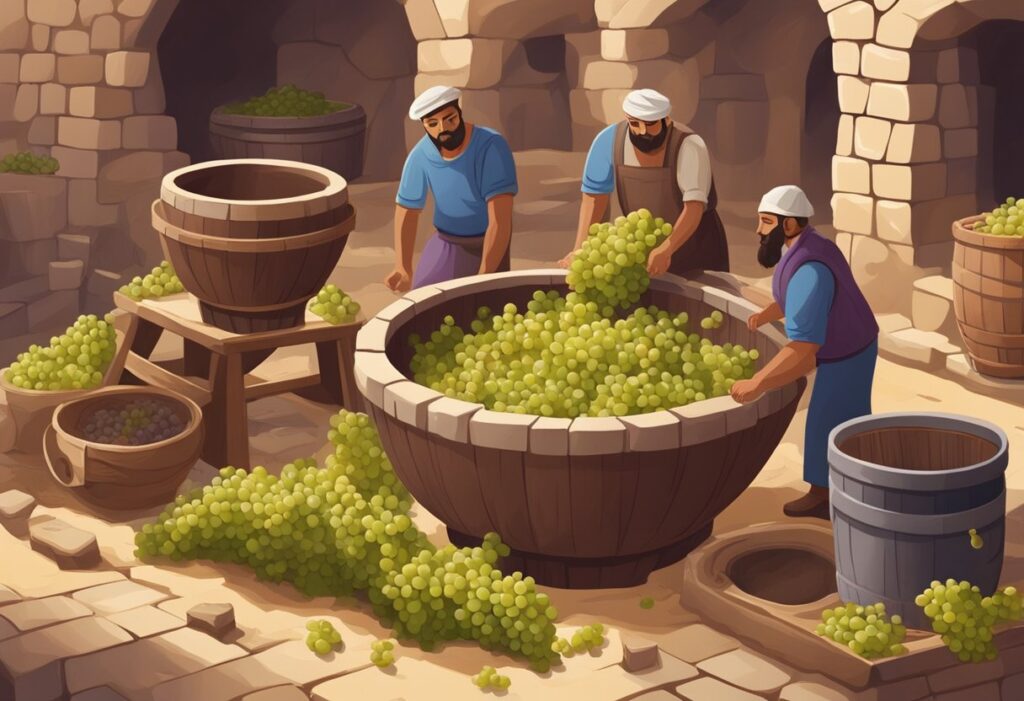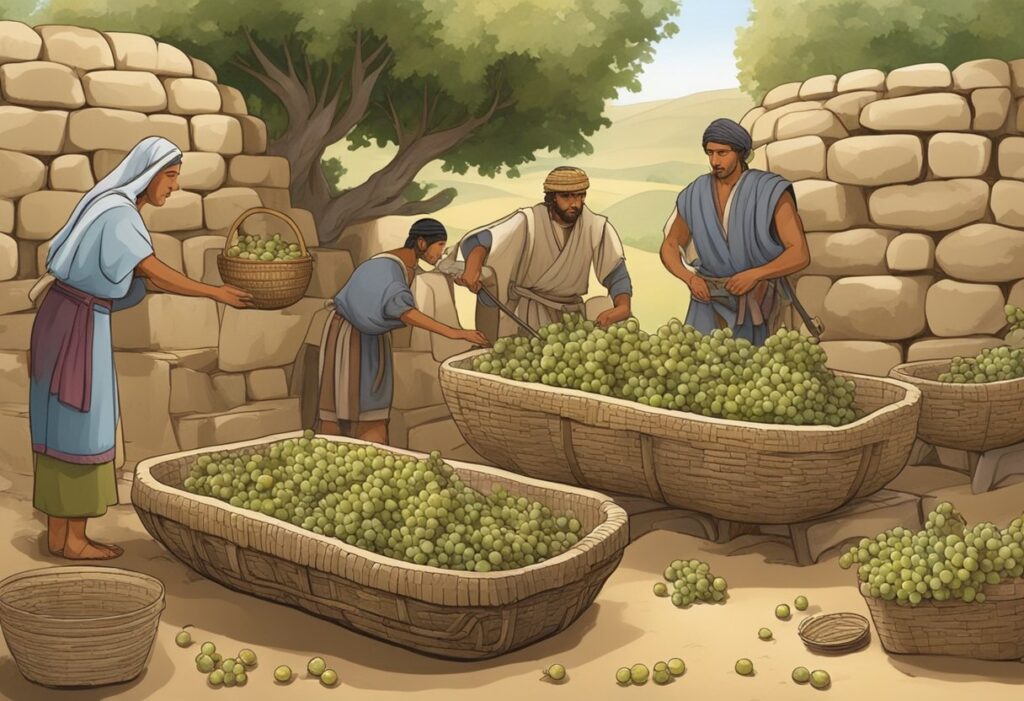The 19th century saw a remarkable transformation in the wine industry, changing how wine was produced, marketed, and consumed. You might find it fascinating that one of the major innovations of this era was the shift from casks to bottles. This not only improved wine quality but also made it more accessible to a broader audience. Additionally, wine became available at your local grocer’s shop, not just through specialized merchants, making it easier for you to enjoy.

Women found expanding opportunities to partake in wine tasting within polite society during this period. This change reflected broader social trends and increased the participation of different segments of society in wine appreciation. The economic transformation of the wine market, especially in places like Italy, was driven by fluctuations in trade relations and the spread of new market practices. By the end of the century, the global transformation of the wine industry laid down patterns that continue to influence wine production and trade today.
You will also notice that international wine trade became more complex, especially in the latter half of the 19th century. This era marked the beginnings of a global wine industry, with countries like France and Italy playing leading roles. They improved viticulture and shared their knowledge worldwide. These innovations set the stage for many modern wine practices you see today.
The Pivotal Role of Pests and Diseases

In the 19th century, pests and diseases played crucial roles in shaping the viticulture industry. Their impacts not only decimated vineyards but also drove significant changes in cultivation and pest management practices.
The Scourge of Phylloxera
Phylloxera, a microscopic aphid, wreaked havoc on European vineyards. Originating in North America, it arrived in Europe in the 1860s and rapidly spread. This pest feeds on grapevine roots, causing the plants to wither and die. Entire vineyards were decimated, leading to a severe wine shortage.
Europe’s winemakers faced financial ruin, compelling them to seek solutions. The introduction of resistant American rootstocks offered a remedy. By grafting European vines onto these rootstocks, vineyards could thrive again. This practice became widespread and remains a cornerstone of modern viticulture.
Vine Diseases and their Impact
In addition to phylloxera, vineyards faced numerous diseases. Powdery mildew, caused by the fungus Uncinula necator, affected both leaves and grapes. It stunted growth and reduced grape quality, leading to lower yields.
Downy mildew, another fungal threat, spread rapidly in damp conditions. It caused yellowing of leaves and eventually killed the plant. Farmers had to adopt new cultivation techniques and chemical treatments to combat these diseases.
Despite their initial devastation, these challenges pushed the industry toward innovative solutions. Improved disease management practices emerged, laying the foundation for a more resilient and sustainable viticulture. Through these trials, the modern wine industry evolved to better withstand the threats posed by pests and diseases.
Viticulture Revolution and Technological Advances

The 19th century was a pivotal time for the wine industry, marked by significant innovations and the integration of scientific principles in viticulture. This period transformed winemaking practices and improved wine quality.
Innovations in Winemaking
During the 19th century, technological innovations revolutionized winemaking. One major change was the introduction of steam-powered machinery, which improved efficiency in vineyards and wineries. These machines made processes like grape crushing and pressing faster and less labor-intensive.
Another remarkable innovation was the development of the Bordeaux mixture, a blend of lime, copper sulfate, and water. This mixture controlled mildew and ensured healthier vines, leading to better grape quality.
Advances in bottling and corking technologies also played a crucial role. New bottling methods helped in preserving wine longer, while improved cork quality reduced the risk of spoilage. The emergence of these techniques ensured that wines aged better and reached consumers in optimal condition.
Science Meets Viticulture
The 19th century saw science deeply influence viticulture practices. The study of plant physiology led to a better understanding of the vine’s growth and reproduction. This knowledge allowed for more effective pruning and training methods, enhancing grape yield and quality.
Microbiology also made its mark. The discovery of yeast’s role in fermentation by Louis Pasteur provided winemakers with the knowledge to control the fermentation process more effectively. This breakthrough led to more consistent wine flavors and improved overall quality.
Additionally, soil science became essential, as different soil compositions were found to affect grape characteristics. This understanding led growers to select the best soil types for planting specific grape varieties, tailoring their approach to produce the best possible wines.
Geographical Expansion and Terroir Exploration
In the 19th century, the wine industry saw significant growth, with changes in both Old World regions and new wine territories. This period marked the discovery and development of unique terroirs that shaped the wine profiles we enjoy today.
Old World Traditions: France, Italy, and Spain
In France, regions like Bordeaux and Burgundy were pivotal during the 19th century. French vintners perfected their craft, leveraging the unique conditions of their terroirs, such as the gravelly soils in Bordeaux and the limestone-rich earth in Burgundy. These regions became benchmarks for quality and established practices that are still revered today.
Italy also saw refinements in its wine regions, particularly in places like Tuscany and Piedmont. The focus was on improving viticulture and experimenting with native grape varieties like Sangiovese and Nebbiolo, which thrived in their respective terroirs. These efforts not only enhanced the quality but also the global reputation of Italian wines.
Spain’s wine industry evolved through the development of regions such as Rioja and Jerez. Spanish winemakers began to understand the significance of their terroir, focusing on the unique arid climate and chalky soils of Jerez for Sherry production. Rioja, with its varied microclimates, began to produce rich, robust red wines that gained international acclaim.
New World Horizons: United States and Australia
Across the Atlantic, the United States, particularly California, emerged as a formidable wine producer in the 19th century. The Napa Valley, with its diverse terroir, offered ideal conditions for growing premium grape varieties. Pioneers in Napa focused on perfecting their techniques, which eventually led to the creation of world-class wines that could rival those of Europe.
Australia also entered the wine scene during this period. Regions like the Barossa Valley and Hunter Valley established the country as a New World wine powerhouse. The Australian terroir, characterized by its unique soils and climate, allowed for the cultivation of robust grape varieties such as Shiraz and Chardonnay. This terroir-driven approach resulted in distinctive wines that gained popularity worldwide.
The exploration of new terroirs in these regions not only expanded the global wine landscape but also introduced diverse flavor profiles that enriched the overall wine experience.
Economic Factors and Market Dynamics

The wine industry underwent significant economic changes during the 19th century, deeply influenced by trade patterns and production shifts that had a lasting impact.
Trade and Consumption Patterns
In the mid-19th century, the world wine trade was modest, accounting for less than 5% of production. As international trade routes expanded, wine became more accessible globally. By 1850, wine trade saw significant growth, enhancing its economic importance.
Key developments included improved transportation and communication systems, which made it easier to export and import wine. The market revolution in the United States also played a role, fostering a national market economy. This period saw an increase in the demand for wine as living standards rose.
Wine Production and Economic Impact
Italian wine production saw remarkable changes before the First World War, driven by both domestic and international markets. Economic transformations included fluctuations in trade relations and challenges like disease outbreaks affecting vineyards.
During this time, Italian wine faced strong market competition. The production processes adapted to these challenges, leading to increased wine exports. Italy became a key player in the global wine market, contributing significantly to its economy.
The global wine industry also saw a decline in red wine production by 25% from its peak in 2004, with red wines decreasing from 48% to 43% of total production. This shift impacted prices and market dynamics, changing consumer preferences and influencing production strategies.
Societal Influences and Wine Legislation

In the 19th century, societal views and legal changes greatly shaped the wine industry, including the actions of significant institutions and the drastic impacts of Prohibition.
The Role of Institutions and Governance
Institutions and their governance played a major role in the wine industry’s evolution. As winemaking became more industrialized, regulatory bodies began to set standards for quality and safety. These institutions helped foster growth and innovation in wine production by ensuring consistent practices and supporting research.
Governments also implemented laws to control wine production and distribution. These laws aimed to reduce fraudulent practices and ensure that consumers received quality products. By the late 19th century, many regions had established regulations that helped protect both producers and consumers.
Prohibition and its Effects on the Wine Landscape
In the early 20th century, the temperance movement led to the Prohibition era. This movement pushed for alcohol bans, culminating in the 18th Amendment in 1919, which prohibited the production, transport, and sale of “intoxicating beverages” including wine. This had a devastating effect on the wine industry.
Almost 98% of wineries were forced to close, leading to significant economic fallout. Many small businesses went under, and countless workers lost their jobs. Some wineries managed to survive by producing sacramental wine or pivoting to other products, but the industry as a whole suffered greatly.
Although Prohibition ended in 1933, the wine industry took decades to recover and regain its pre-Prohibition strength and quality.

